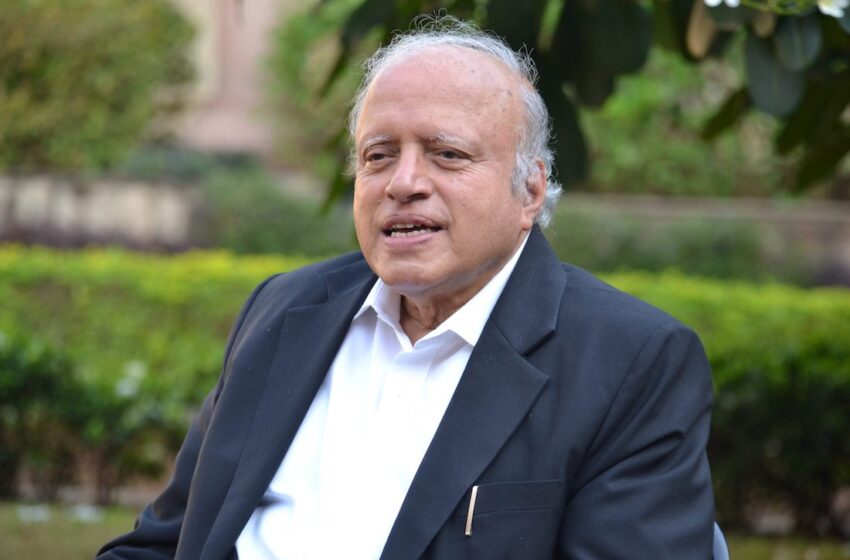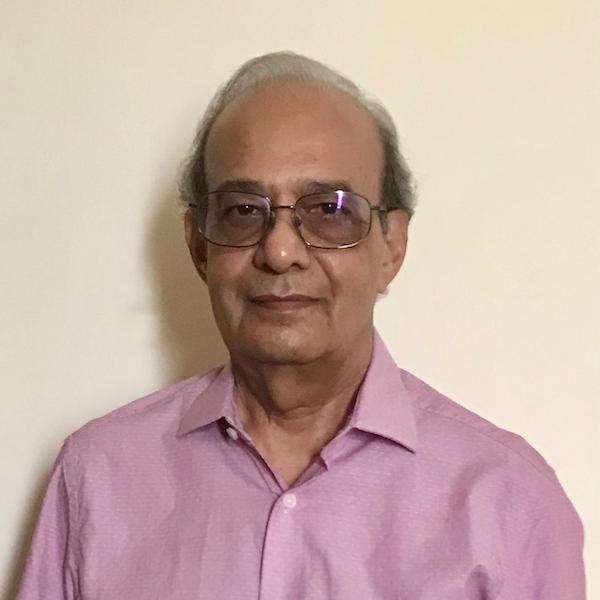Swaminathan made myriad contributions to global agriculture: Suri Sehgal

M.S. Swaminathan
Besides the Green Revolution, the biggest contribution of M.S. Swaminathan was strengthening India’s agricultural research system, says visionary Indian American agricultural entrepreneur Sehgal
Renowned Indian geneticist and international administrator, Dr. M.S. Swaminathan, who died Sep 28, 2023, in Chennai, Tamil Nadu, at the age of 98 has been rightly hailed as the father of India’s Green Revolution.
Back in the early and mid-sixties India was living from ship to mouth with the generosity of wheat shipments from the US, says visionary Indian American agricultural entrepreneur Dr. Surinder (Suri) Sehgal.
It was Swaminathan who then persuaded the powers that be to introduce new technologies and high-yield varieties of wheat and rice seedlings to give birth to India’s green revolution, he says.
Swaminathan, who as a teenager witnessed the Bengal famine of 1943 when millions of people died of starvation, “chose to study agriculture over medicine primarily to improve the livelihood of the rural poor.”
“He followed in the footsteps of earlier leaders like Gandhiji and Nehru who forewent the lucrative options they had abroad to return to India to serve their country and make a difference in improving the lives of the people,” says Sehgal who himself was encouraged by Swaminathan to study crop genetics at Harvard.
Swaminathan’s contributions to global agriculture are many, says Sehgal, who received the prestigious Dr. MS Swaminathan Award for Leadership in Agriculture for 2022. In 2016, he received the American Bazaar Philanthropy Award.
“Besides the Green Revolution, his biggest contribution has been strengthening the agricultural research system in India and promoting polices that are beneficial to the rural farming communities,” he says.
In an interview with the American Bazaar, Sehgal, a global leader in the development and spread of the hybrid seed industry worldwide, fondly recalls the life and work of Swaminathan and how inspired by his vision of a world free from hunger, he founded SM Sehgal Foundation (India) and Sehgal Foundation (USA).
AB: When did you first meet M.S. Swaminathan, and where?
SS: I first met Professor M.S. Swaminathan in 1958 when he was head of the Division of Genetics at the Indian Agricultural Research Institute (IARI).
From him and a Rockefeller Foundation scientist, Dr. Ernie Sprague who was based at IARI at that time, I learned about a team of three eminent scientists who had visited India in 1951/52 with the objective of studying Indian agriculture and making recommendations for its improvement.
Among them was Professor Paul C. Mangelsdorf of Harvard University. Since my interest was in corn genetics, I was encouraged by them to do my graduate studies under Professor Mangelsdorf at Harvard.
As a result of that team’s IARI visit and recommendations, an agreement was signed in 1956 between the Government of India and the Rockefeller Foundation to revamp the entire agricultural system in India—from a colonial empire-centric system to a modern, land-grant farmer-centric system that had the potential to revolutionize Indian agricultural system as it happened earlier in the US.
As a result of this agreement, a close collaboration developed between the RF work in Mexico on wheat by American agronomist Norman Borlaug and Dr Swaminathan at IARI.
Dr Swaminathan regularly received shipments of experimental varieties of wheat for testing in India. In one experimental plot, Swaminathan observed the outstanding performance of the dwarf wheat(s) developed by Borlaug.
Dr Swaminathan recognized the potential value of the Mexican dwarf wheats and visualized that these could revolutionize Indian wheat production and make India self-sufficient in food. Had this not occurred, it is quite possible that there would not have been a Green Revolution.
AB: Swaminathan has been hailed as a global leader of the Green Revolution. How did he persuade policymakers to farmers to adopt new methods and introduce high-yielding varieties of wheat and rice in India?
SS: In the early and mid-sixties, the food situation in India was critical because of the droughty years in the early 1960s, which culminated with the extreme drought of 1965 and 1966.
India was living from ship to mouth with the generosity of wheat shipments from the US. Since Dr Swaminathan had identified the dwarf varieties that were looking promising among the many sent by Borlaug, Dr Swaminathan, invited Borlaug to visit India and observe the wheat plots with him at IARI and in Punjab.
After observing the outstanding performance of High Yielding Varieties (HYVs), Dr Swaminathan arranged a meeting of Borlaug with the Indian Agriculture Minister Chidambaram Subramaniam, where they urged the minister to provide policy support to enable technologies such as irrigation and the use of chemical fertilizers. The areas selected for the planting of HYVs by Swaminathan were Punjab, Haryana, and Western UP.
The key policy decisions at every level were supported by the minister and promptly implemented by Dr Swaminathan and his team. The lands where yields went up dramatically were later called Green Revolution lands.
Dr. Swaminathan knew the can-do attitude of the Punjabi and Haryanvi farmers, and he was confident that they would deliver (which they did) if supported with the technologies Borlaug and Swaminathan had recommended to the agriculture minister.
Their joint recommendations were fully supported by Prime Minister Indira Gandhi. It was the beginning of the Green Revolution.
AB: What was his work at IRRI in the Philippines that won him the first World Food Prize in 1987?
SS: Dr. Swaminathan was the Director General of the International Rice Research Institute (IRRI) from 1982 to 1988. He was named the first World Food Prize recipient in 1987 for identifying and spreading HYVs of wheat into India and spearheading the promotion of HYVs of rice from the Philippines.
The first high-yielding variety of rice, IR-8, was developed at IRRI by scientists, Dr Peter Jennings and Dr. Henry Beachell, and was planted on a large scale in 1966 by Nekkanti Subha Rao, a farmer in the state of Andhra Pradesh, India.
Dr. Swaminathan spearheaded the spread of HYVs of rice like he did for HYVs of wheat. The HYVs of wheat and rice triggered the Green Revolution that saved India from the brink of starvation.
During his tenure at IRRI, the institute developed IR-64, a rice variety that yielded up to 24% more grain than an earlier strain, IR-36. IR-64 has been grown on more than 10 million hectares worldwide and fed millions of people.
AB: How did he inspire other agricultural scientists over the years and his role as a mentor?
SS: Many students who did their graduate studies under his mentorship, while Dr. Swaminathan was head of the Genetics division at IARI, are now considered among the “Who’s Who” in agriculture in India.
When he was later the Director General of the Indian Council of Agricultural Research (ICAR) from 1972–80, he streamlined the national agricultural research system in India.
AB: Tell us about his work in other parts of the world, especially the United States and how he turned down a faculty position in the US in order to make a difference back home in India?
SS: As a teenager, he witnessed the Bengal famine of 1943 when millions of people died of starvation, which left a strong impression on him to do something to help the farmers.
He chose to study agriculture over medicine primarily to improve the livelihood of the rural poor. He followed in the footsteps of earlier leaders like Gandhiji and Nehru who forewent the lucrative options they had abroad to return to India to serve their country and make a difference in improving the lives of the people.
AB: In your opinion, what was Swaminathan’s biggest contribution? What do you think is his legacy?
SS: Swaminathan’s contributions to global agriculture are many, and the list is very long but a few select ones are as follows: Besides the Green Revolution, his biggest contribution has been strengthening the agricultural research system in India, promoting policies that are beneficial to the rural farming communities such as having a minimum support price for their produce; the establishment of MSSR Foundation (MSSRF); his role with the establishment of International Crops Research Institute for the Semi-Arid Tropics (ICRISAT) at Hyderabad in India; the International Board for Plant Genetic Resources (now known as Biodiversity International in Italy) and the International Council for Research in agro-forestry in Kenya.
AB: Finally, as the winner of the prestigious Dr M S Swaminathan Award for Leadership in Agriculture for 2022, tell us how his vision inspired your own work.
SS: Sehgal Foundation USA, in Des Moines, Iowa established SM Sehgal Foundation (SMSF) in India as a public trust in 1999. Arvind Bahl, then CEO of SMSF, and I made a special visit to MSSR Foundation in Chennai primarily to seek Dr Swaminathan’s advice on sustainable agricultural development and women’s empowerment.
He emphasized to us that rural India desperately needed information, as it is pretty much cut off with no physical or electronic connectivity.
The common villager was unaware of their basic rights and entitlements. The development funds allocated by the Central Government were mostly siphoned off by the intermediaries, and only a fraction of these services were reaching the villagers.
We spent the entire day at MSSRF and again made a second visit later before we formalized our foundation’s mission. Our flagship programs on women’s empowerment and good rural governance were an outcome of those discussions with Dr. Swaminathan. He was passionate about the needs of the small farmers and about sustainable farming practices and said he was pleased with our focus on rural India.
In 2016, Dr. Swaminathan immediately agreed to write the Foreword of a book on our foundation’s work, ‘Together We Empower: Rekindling Hope in Rural India.’
His opening statement in the Foreword is: “Long ago, Mahatma Gandhi said that India’s ‘villagers have lost all hope. They suspect that every stranger’s hand is at their throats and that he goes to them only to exploit them.’ Against such a background, this book about Sehgal Foundation, which provides hope where there was despair, is welcome.”

